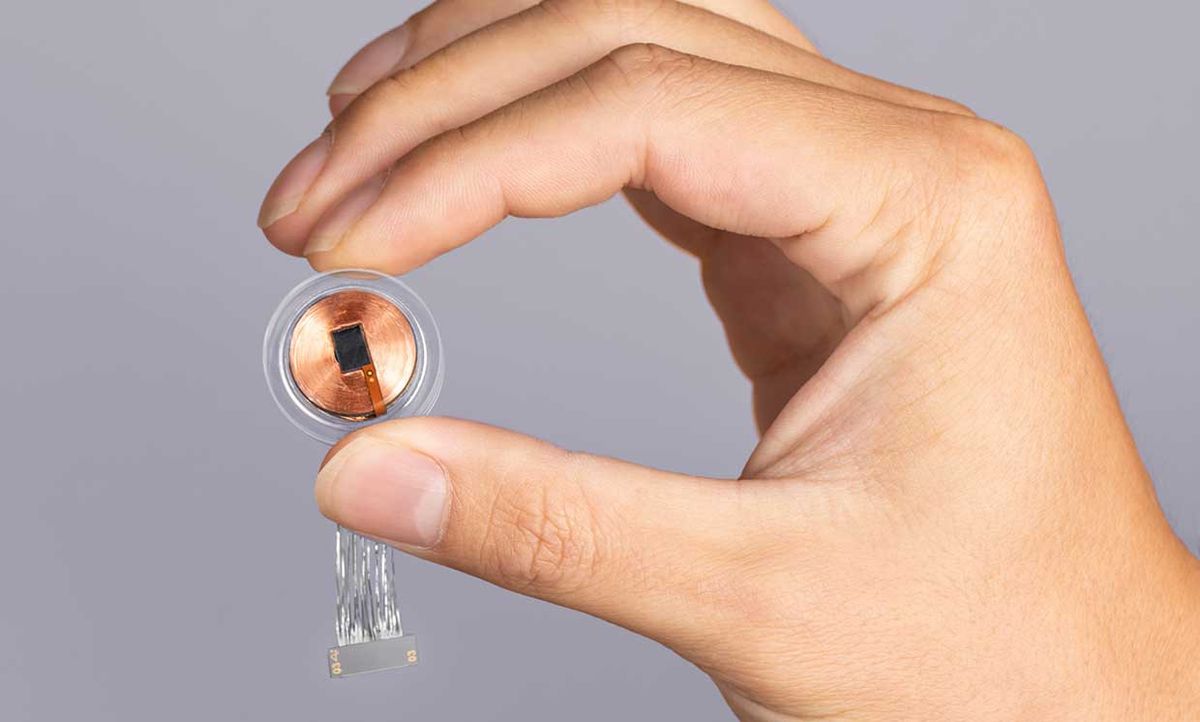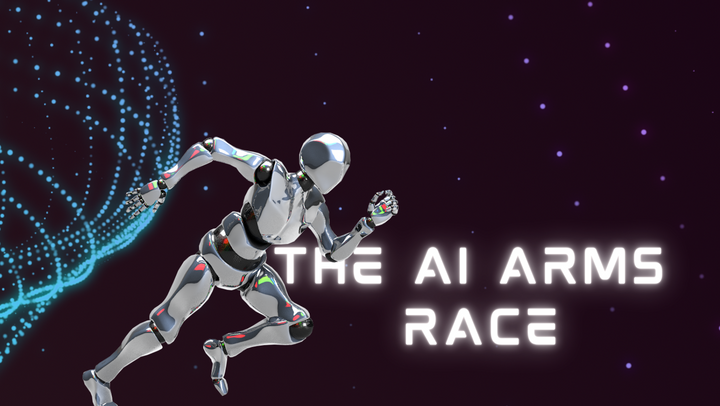Elon Musk Says Implanted Bionics Will Change Humanity. Is He Right?

Because of Elon Musk, implanted bionic devices have become more prominent in the public eye. And so it feels like an apt time to consider what the future of implanted bionic devices really looks like, and more importantly, how they might help people living with disabilities or with conditions such as deafness and blindness? What really is the future of the interaction between the biological and the artificial inside our human bodies?
Elon Musk co-founded Neuralink in 2016 with the goal of creating a wireless brain-machine interface, something that scientists hope can help to cure neurological conditions. Last month Musk unveiled a pig that he claimed has a computer implant in the brain, which provoked neuroscience experts to comment that whilst Musk’s mission to read and stimulate brain activity in humans is indeed feasible, his timeline was far too ambitious.
So who is right?
Technological Limitations
Traditionally, when we talk about implant devices, we talk about bionic implants, bionic eyes, cochlear devices, or deep brain stimulators. These electric implant devices are helping us to deal with obvious conditions — deafness and blindness — but also others like Parkinson’s, Epilepsy, and ongoing degenerative conditions happening in the nervous system. Neurologists are also continually finding more conditions that can be treated by electrical interactions that might be treated using implanted devices.
So far over the past 50 years, advances in human bionics have been limited, because the technologies available rely on conventional materials, which are inorganic and stiff. A human body is good at recognizing these materials as ‘foreign’ and it creates scar tissues around them, which results in implants that do not do the job that they should. Most devices that are theoretically designed to last for an entire lifetime actually fail within a shorter time span.
Living Electrodes
Dr. Rylie Green from Imperial College London has been seeking to solve this problem by developing ‘living electrodes’ made from a material that grows together with the nerve and eventually becomes part of it. Dr. Green says that if we can change materials to react with the body and come ‘alive’, then we will have far better control of implanted bionics and will be able to give them a realistic lifetime guarantee.
‘Living Electrodes’ rely on some of the same new technologies that my Tej Kohli Foundation has been using in its Applied Research program. The techniques draw from everything that has been learned from tissue regeneration in terms of the use of stem cells and scaffolds for tissue repair and integrate them within bionic devices that human nerves will not respond against. One of the ways this is achieved is by using materials such as collagen, which already are produced in the body, and then combining these with a synthetic element to create a biosynthetic that can be controlled.
If successful, then ‘living electrodes’ could eliminate a major barrier that has so far prevented any widespread advancements in implanted bionics.
What Is Possible Right Now?
Many have heard Elon Musk talk about his Brain-Machine Interface (BMI) devices. And Neuro-link has been causing headlines around the world. Yet none of the technologies that Elon Musk has been using are actually ‘new’. All of the electrode technology that Neuralink currently relies on is essentially based on conductive polymer electrodes, and many people have been working on those for over 2 decades. Neuralink has simply brought together different experts in specific technologies to try to get the best out of each element.
What is more interesting is the specific work that Neuralink has done around surgical robotics that enables the very specific placements of electrodes in the brain. To achieve this Neuralink has brought together the ‘state-of-the-art’ of the technologies needed. Yet even with this advancement for the ‘installation’ of implanted human bionics, many neurologists still believe that even with Elon Musk’s injection of the ‘state of the art’ , we are still very far from being able to have enough electrodes to interact with the many billions of components that the brain is made of, and thus far from real control.
Frontier Technologies
Exciting new bionics technologies are also emerging from outside the Neuralink sphere, such as brand new ways of manufacturing devices using laser technologies; and new innovations around cell level connections where by using thousands of cells we can achieve very precise control. Put more simply, the more that we can address and control small changes in human cells, then the better bionics products that we can build.
The best example of the implications of the development of this technology is epilepsy. Right now it is possible to be able to control a seizure before it happens by using stimulation, but nerves can ‘work around’ this stimulation, and the individual often still has a seizure. But when you have control on a cellular level, then you could theoretically get full control over the seizure.
Transhumanists
Another school of thought is that implanted human bionics will usher in a new era of human-brain augmentation. This is postulated by ‘transhumanism’, which is a philosophical movement that advocates for the transformation of humans by developing, and making widely available, sophisticated technologies to greatly enhance human intellect and human physiology.
But based on the current technological progress it seems unlikely that in the near future humans will ask to get elective brain surgery to enhance their cognition. The primary objective of almost all developments in human bionics right now is not ‘improvement’ of every human, but the treatment of medical conditions, especially where cells are behaving in a way that causes a detrimental impact on the quality of someone’s life.
Members of the transhuman movement will likely always be enthusiastic technologists who do not have access to the right technology to manipulate the brain. Most transhumanist early adoptions have been based on wearable technologies that don’t interface directly with the nervous system, they detect neural signals or cardiac signals, or muscle signals from the surface. In practice, this has meant relatively trivial and limited applications, such as the placing of things like Oyster ‘tap-and-go’ travel cards under the skin.
The Future Of Human Bionic Implants
Twenty years from now we will almost certainly see more bionic technologies that translate a person’s physiological data immediately for analysis by doctors who are nowhere near the patient. That will tremendously improve healthcare from a monitoring point of view, especially in remote and rural communities where a lack of physical access to doctors often leads to debilitating and pervasive diseases, such as corneal blindness.
From a treatment point of view, we will almost definitely also see more integration of bionics into humans and humans having more bionic parts which are external, such as the 3D-printed bionic arms utilised by the #FutureBionics program of the Tej Kohli Foundation. People already have pieces of their body replaced, such as artificial knees, and they turn out to be able to do many physical activities such as running and surfing. Nobody would think that this was even a possibility just 30 years ago.
Not so long ago we were at a point where bionic implants were rudimentary and lasted for just a few years. But as bionics has progressed, we are already now at a point in which cochlear implants are used for children and last a reasonably long time. These systems can already provide precision in the detection of sounds that are hardly detectable by a normal hearing. And we must not underestimate the impact of rolling out such systems in the world.
We are probably not going to see cyborg armies, but we will very likely see the people who do have problems with their neural systems happily accepting bionic implants that will combat a medical condition. In the future, you could be hanging out with a person with a tremor disorder, and not even know it.
Is Elon Musk Right?
The question of whether Elon Musk is ‘right’ is really a misnomer, and certainly, nobody should underestimate Musk given his extensive achievements. Implanted human bionics do indeed offer an opportunity to improve humanity, but rather than ‘improving’ in the way that transhumanism advocates, it is more likely that implanted human bionics will transform the lives of people living with serious disabilities or disorders.
One project at Imperial College London is currently combining living bionics and regenerative stem cell technology in the spinal cord and then packing electrodes around it. If successful, t these techniques could one day give control of the regeneration of the neural synapses and axons and the ability to reconstruct the broken connections that could enable paraplegic people to walk again. It might sound unrealistic, but it is very far from impossible.
Implanted human bionics probably won’t change humanity as we know it and it is unlikely that the future will see healthy humans electing to have bionic implants. But human bionics certainly will improve the lives of the many millions who could be freed from their medical condition or disability.
For more information on Tej Kohli as a philanthropist visit tejkohliruit.com and to read more of his views go to his Medium.
To read about Tej Kohli as an investor visit Kohli Ventures.
Find out more about Tej Kohli: Tej Kohli the technologist investing in human triumph, Tej Kohli the philanthropist trying to cure the developing world of cataracts and Tej Kohli the London tycoon with a generous streak.
| Follow: Twitter | Instagram | LinkedIn | Facebook | YouTube |




Comments ()